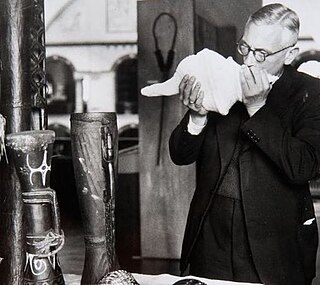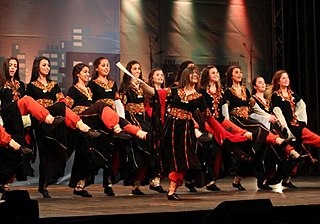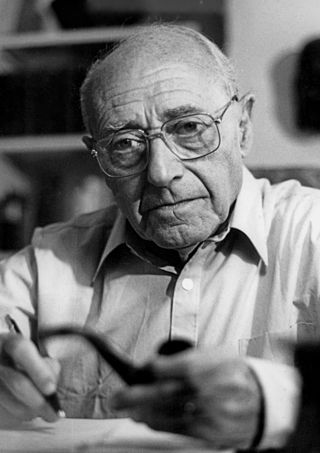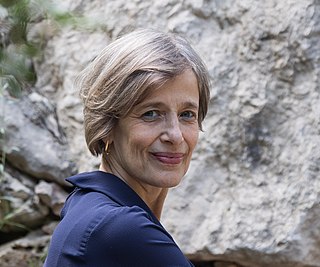
Music is the arrangement of sound to create some combination of form, harmony, melody, rhythm, or otherwise expressive content. Music is generally agreed to be a cultural universal that is present in all human societies. Definitions of music vary widely in substance and approach. While scholars agree that music is defined by a small number of specific elements, there is no consensus as to what these necessary elements are. Music is often characterized as a highly versatile medium for expressing human creativity. Diverse activities are involved in the creation of music, and are often divided into categories of composition, improvisation, and performance. Music may be performed using a wide variety of musical instruments, including the human voice. It can also be composed, sequenced, or otherwise produced to be indirectly played mechanically or electronically, such as via a music box, barrel organ, or digital audio workstation software on a computer.
Musicology is the scholarly study of music. Musicology research combines and intersects with many fields, including psychology, sociology, acoustics, neurology, natural sciences, formal sciences and computer science.
Music history, sometimes called historical musicology, is a highly diverse subfield of the broader discipline of musicology that studies music from a historical point of view. In theory, "music history" could refer to the study of the history of any type or genre of music. In practice, these research topics are often categorized as part of ethnomusicology or cultural studies, whether or not they are ethnographically based. The terms "music history" and "historical musicology" usually refer to the history of the notated music of Western elites, sometimes called "art music".

Ethnomusicology is the multidisciplinary study of music in its cultural context, investigating social, cognitive, biological, comparative, and other dimensions involved other than sound. Ethnomusicologists study music as a reflection of culture and investigate the act of musicking through various immersive, observational, and analytical approaches drawn from other disciplines such as anthropology to understand a culture’s music. This discipline emerged from comparative musicology, initially focusing on non-Western music, but later expanded to embrace the study of any and all different kinds of music of the world.

Art music is music considered to be of high phonoaesthetic value. It typically implies advanced structural and theoretical considerations or a written musical tradition. In this context, the terms "serious" or "cultivated" are frequently used to present a contrast with ordinary, everyday music. Many cultures have art music traditions; in the Western world, the term typically refers to Western classical music.

Dabke is a Levantine folk dance, particularly popular among Lebanese, Jordanian, Palestinian and Syrian communities. Dabke combines circle dance and line dancing and is widely performed at weddings and other joyous occasions. The line forms from right to left and the leader of the dabke heads the line, alternating between facing the audience and the other dancers. In English, it can be transcribed as dabka, dabki, dabkeh.

Alan Parkhurst Merriam was an American ethnomusicologist known for his studies of music in Native America and Africa. In his book The Anthropology of Music (1964), he outlined and develops a theory and method for studying music from an anthropological perspective with anthropological methods. Although he taught at Northwestern University and University of Wisconsin, the majority of his academic career was spent at Indiana University where he was named a professor in 1962 and then chairman of the anthropology department from 1966 to 1969, which became a leading center of ethnomusicology research under his guidance. He was a co-founder of the Society for Ethnomusicology in 1952 and held the elected post of president of that society from 1963 to 1965. He edited the Newsletter of the Society for Ethnomusicology from 1952 to 1957, and he edited the journal Ethnomusicology from 1957 to 1958.

Robert Lachmann was a German ethnomusicologist, polyglot, orientalist and librarian. He was an expert in the musical traditions of the Middle East, a member of the Berlin School of Comparative Musicology and one of its founding fathers. After having been forced to leave Germany under the Nazis in 1935 because of his Jewish background, he emigrated to Palestine and established a rich archive of ethnomusicological recordings for the Hebrew University of Jerusalem.

Josef Tal was an Israeli composer. He wrote three Hebrew operas; four German operas, dramatic scenes; six symphonies; 13 concerti; chamber music, including three string quartets; instrumental works; and electronic compositions. He is considered one of the founding fathers of Israeli art music.
The Melograph, similar to the Melodiograph, is a mechanical apparatus for ethnomusicological transcription usually producing some sort of graph that can be preserved and filed, similar to a recording of music. Beginning with attempts by Milton Metfessel in 1928, assorted devices such as this have been developed or manufactured, the most notable dating back to the 1950s and situated at the University of California in Los Angeles, the University of Oslo, and the Hebrew University in Jerusalem.
Systematic musicology is an umbrella term, used mainly in Central Europe, for several subdisciplines and paradigms of musicology. "Systematic musicology has traditionally been conceived of as an interdisciplinary science, whose aim it is to explore the foundations of music from different points of view, such as acoustics, physiology, psychology, anthropology, music theory, sociology, and aesthetics." The most important subdisciplines today are music psychology, sociomusicology, philosophy of music, music acoustics, cognitive neuroscience of music, and the computer sciences of music. These subdisciplines and paradigms tend to address questions about music in general, rather than specific manifestations of music. In the Springer Handbook of Systematic Musicology, "(the) sections follow the main topics in the field, Musical Acoustics, Signal Processing, Music Psychology, Psychophysics/Psychoacoustics, and Music Ethnology while also taking recent research trends into consideration, like Embodied Music Cognition and Media Applications. Other topics, like Music Theory or Philosophy of Music are incorporated in the respective sections."

Gerard Henri Luc Béhague was an eminent Franco-American ethnomusicologist and professor of Latin American music. His specialty was the music of Brazil and the Andean countries and the influence of West Africa on the music of the Caribbean and South America, especially candomblé music. His lifelong work earned him recognition as the leading scholar of Latin American ethnomusicology.
The ataaba is a traditional Arabic musical form sung at weddings, festivals, and other occasions. Popular in the Middle East, it was originally a Bedouin genre, improvised by a solo poet-singer accompanying themselves on the rababa. As part of Arab tradition, ataabas are generally performed by a vocal soloist, without instrumental accompaniment, who improvises the melody using folk poetry for the verse.
Assaf Shelleg is an Israeli-American musicologist and pianist, a senior lecturer of musicology at The Hebrew University of Jerusalem. He was previously the Schusterman Visiting Assistant Professor of Musicology and Jewish Studies in the Department of Religious Studies at the University of Virginia (2011–2014), and had taught prior to that as the visiting Efroymson Scholar in the Jewish, Islamic & Near Eastern Languages and Cultures Department at Washington University in St. Louis (2009–2011). Shelleg specializes in art music of the twentieth and twenty-first centuries, modern and contemporary Jewish Art Music, Oral Jewish musical traditions, historical musicology, post-tonal theories, actor-network theory, and contemporaneity, often whilt focusing on the cultural networks in which art music was written by or about Jews, in Europe, North America, British Palestine, and Israel. Between 2021 and 2023 Shelleg has served as the director of the Cherrick Center for the study of Zionism, the Yishuv, and the State of Israel, and between 2020 and 2022 he was appointed curator of the Israel Philharmonic Orchestra, with projects that saw the premiers of works by Betty Olivero, Chaya Czernowin, Oedoen Partos, Verdina Shlonsky, and others.
Stephen Blum is an American scholar and musician, whose research has primarily been in ethnomusicology. He has lent a multidisciplinary approach to the writing and publication of numerous articles discussing a wide range of musical topics and ideas.
George Herzog was an American anthropologist, folklorist, musicologist, and ethnomusicologist.
David Richard Widdess, FBA is a musicologist and academic. Since 2005, he has been Professor of Musicology at the School of Oriental and African Studies, University of London.
Ethnomusicology is the study of music from the cultural and social aspects of the people who make it. It encompasses distinct theoretical and methodical approaches that emphasize cultural, social, material, cognitive, biological, and other dimensions or contexts of musical behavior, in addition to the sound component. While the traditional subject of musicology has been the history and literature of Western art music, ethnomusicology was developed as the study of all music as a human social and cultural phenomenon. Oskar Kolberg is regarded as one of the earliest European ethnomusicologists as he first began collecting Polish folk songs in 1839. Comparative musicology, the primary precursor to ethnomusicology, emerged in the late 19th century and early 20th century. The International Musical Society in Berlin in 1899 acted as one of the first centers for ethnomusicology. Comparative musicology and early ethnomusicology tended to focus on non-Western music, but in more recent years, the field has expanded to embrace the study of Western music from an ethnographic standpoint.

Professor Ruth HaCohen is an Israeli musicologist and a cultural historian. She holds the Artur Rubinstein Chair of Musicology at the Hebrew University of Jerusalem. Ruth HaCohen is the recipient of the 2022 Rothschild Prize in the Humanities. In 2017, she was elected as Corresponding member by the American Musicological Society (AMS) "for outstanding contributions to the advancement of scholarship in music."








